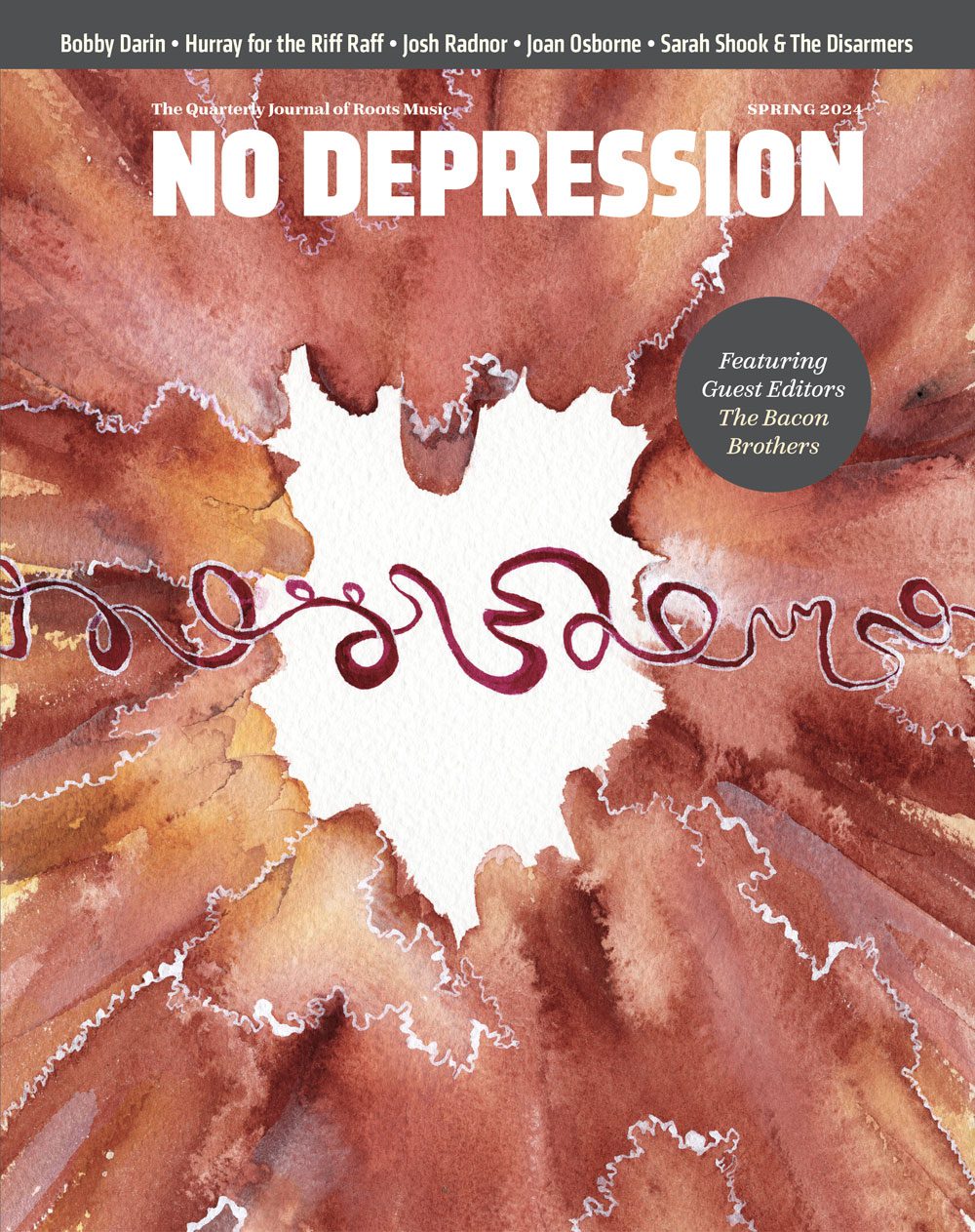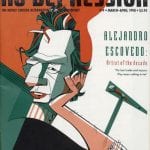Mike Ireland – Starting over
“Perhaps such secrets…were only expressed when the person laboriously dragged them into the light of the world, imposed them on the world, and made them a part of the world’s experience. Without this effort, the secret place was merely a dungeon in which the person perished…”
— James Baldwin, Another Country
“This is a song about my house,” Mike Ireland is telling an audience in Columbia, Missouri. “Well, it’s not really my house anymore, it’s my ex-house. Where I used to live with my ex-wife. In my ex-life.”
The song is “House Of Secrets”, the opening track to Learning How To Live, the Sub Pop debut of Mike Ireland & Holler. Played live on this cold January night the song heats up the room, telling the tale of a man bent on revenge against his cheating wife and her lover by lighting “the flame of love once more” — in the gas stove — and letting his old home “burn on down.” Problem solved, the man seems to be thinking as he strikes the match, and it’s scary to imagine that someone could actually be at a place where such insane logic seems reasonable. It’s a gripping performance.
But it can’t hold a candle to the incendiary version on the album. Driven by an elaborate, aggressive string arrangement and by Ireland’s own aggrieved tenor, this “House Of Secrets” doesn’t just tell a tale, it pushes us to live it, to walk beside the singer as he paces through the empty rooms of the house, to share his desire to burn this sucker down. The strings brood and press inward until there’s no longer any world outside this house, outside this man’s problem and his grim solution, until you feel that the whole world, your world, must inevitably explode in flames. This “House Of Secrets” is superior because it doesn’t merely reveal secrets; it makes those secrets your own.
Learning How To Live is about facing up to secrets. The week before that Columbia show, Ireland and I got together for lunch in his hometown of Kansas City, Missouri, and confronted some of them, beginning with the end of his ex-life in his ex-band, the Starkweathers.
Alt.country when alt.country wasn’t cool, the Starkweathers were a four-piece Kansas City outfit built around exquisite Stanley Brothers-inspired harmonies and a politicized country-rock aesthetic that was half Johnny Cash, half Clash. Ireland wrote and sang lead on about a quarter of the Starkweathers’ originals, and between 1992 and ’95, the group released a small handful of remarkable recordings: a single and a 5-song EP on tiny Faye Records, a cut on the second Bloodshot Records compilation. But then, as they were waiting for Sub Pop to release the single they all hoped would catapult the band to the next level, Ireland’s world came burning down around him.
“Uh, well,” he says quietly, grasping to find an easier way to say it. But then he shrugs — there is no easier way, there’s just the truth — and he speaks plainly: “The band broke up because I found out my wife and my lead singer from the Starkweathers were having an affair.”
He takes a deep, slow breath and continues. “It’s kinda funny ’cause, well it’s not really funny, it’s odd because it’s almost like a country song in a way. I found out the affair was going on so my wife and I split up, the Starkweathers break up, and I had quit working like just a month before that because we were going to devote more time and energy to the band. So suddenly I was without a wife or a house or a band or a job or a best friend. And it was pretty devastating…I mean, it was devastating for a long time. I didn’t expect to be in a band again, I didn’t really want to.”
Within a few months, though, Ireland was surprised to find that new songs were just crying out of him. “They just came,” he explains, “just happened. My songs on this album are all related to what was going on after the breakup. They’re not detail-for-detail autobiographical, I can’t write that way…but in terms of emotional content, they’re all very true.”
It’s the emotional content, the hard truth of it, that concerns Ireland most. And that, more than anything, explains why Learning How To Live is so influenced by countrypolitan, the hugely popular country sound of the late ’60s and ’70s. Countrypolitan used dramatic pop-inspired arrangements — with strings, sometimes — that typically swelled from voice-and-bass beginnings to climaxes of unabashed emotion.
The best examples of the style remain the most popular, the ones that charted both pop and country: the collaboration of Charlie Rich and producer Billy Sherrill on “The Most Beautiful Girl In The World”; Jeannie C. Riley’s rendition of Tom T. Hall’s “Harper Valley PTA”; Glen Campbell’s delivery of Jimmy Webb’s “Wichita Lineman”; Bobbie Gentry’s “Ode To Billie Joe”, Lynn Anderson’s “Rose Garden”, Sammi Smith’s “Help Me Make It Through The Night”. Like those hits, Ireland’s compositions are clearly country while also being steadfastly pop.
“Anyone who describes what we’re doing as hard-core country is kind of misunderstanding it,” Ireland explains. “When I think of what we do, I don’t think of it being hard-core country. Much of the stuff that appeals to me, the stuff I grew up with, was crossover country, country with pop elements. I mean, my listening isn’t reserved to just country music, and I think that shows up on the record. There’s definitely a pop sensibility to it.”
While that sensibility is plainly present in the strong melodicism of Ireland’s songs, it’s the four cuts with string arrangements by Jerry Yester (Tom Waits, The Association) that are most forcefully going to identify this debut as a pop record. Ireland predicts that some listeners, especially those who equate authenticity with stripped-down sounds, are going to struggle with such an approach, either labeling it a sellout (“In reality, it’s probably the least commercial thing you can do right now,” he laughs) or not taking it seriously. He’s already caught a bit of this resistance in the laughter that sometimes begins once people realize he’s launched into a cover of, say, Ray Price’s “For The Good Times”. Mention records like that to Ireland, though, and he gushes respect.
“Oh man, ‘For The Good Times’ is such a great song and performance. And maybe — not like we could ever approach the greatness of Ray Price’s version — but maybe we can play it and get people to hear it again, help them get over the hump of, ‘Gee, that has strings, it must be bad.’ Because I don’t think your natural response would be to hear music that is that beautiful and think it’s bad. I think, intellectually, someone has to tell you that strings are a cue for bad music.




